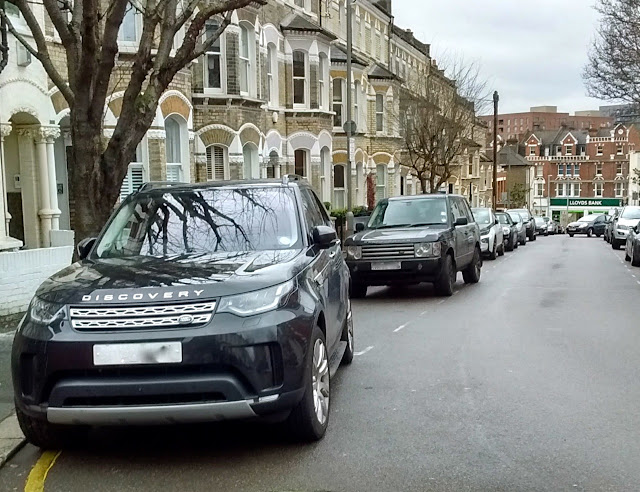 |
| Those plastic-looking venetian blinds were certainly not there when Angela Carter owned this house in Clapham. So far as I remember most of the house of was painted deep blood red. |
This was reported in the Guardian on 11 September, but not in many other papers. I wonder who turned up to do the honours - and whether the plaque was covered with those rather camp little curtains on a drawstring, as happened at the unveiling of Natsume Soseki's plaque a decade ago, a few houses up in the same street.
I'm not sure where Angela Carter's work now stands in the literary world, but I do know that she meant a great deal to me. To anyone who had been turned on to the subversive delights of 'alternative' fiction and poetry in the late '60s, largely thanks to Penguin Books, Carter's fiery works were irresistible.
I read one of her early novels, The Magic Toyshop, on the top deck of the 68 bus, all the way from South Croydon Bus Garage to exotic Chalk Farm and what seemed the impossibly sophisticated world of NW3 hippie-dom.
En route the bus rumbled up and down the roller-coaster hills of south London - Beaulieu Hill, West Norwood, Tulse Hill, Herne Hill and Camberwell. There was a specific corner on Norwood Road, SE24, opposite Brockwell park, which in the early November dusk seemed to me the perfect location of this story.
That area grew in imagination: I would dream about cycling to this Magic Toyshop. In my dream, there was always a magic second-hand bookshop next door which also sold the best flapjack. And Brocks fireworks.
When, 25 years later I moved into a rickety 3rd floor flat in Clapham, I had no idea the author of that book lived in the same postal district.
Now I turn to her journalism more than her fiction. There's a great collection of her non-fiction writing called Shaking A Leg, which includes an article "D'you mean South?," written for New Society magazine in 1977. It's about South London in general and Clapham in particular, and says more about gentrification than anything else I have read. Although the process we see now is so much more aggressive, more arrogant and selfish, it is essentially the same. And yet she clearly still loved living where she did live.
All this was the subject of an earlier post on this blog, written when the house where Natsume Soseki lodged for the last few months of his unhappy but productive stay in London got its plaque. Carter must have known Soseki lived a few houses up the street, but I don't think she ever references him.
For along time there was a tiny but fascinating Soseki Museum in a flat directly opposite this house. Sadly it closed, and the flat it occupied was sold, two years ago. I wrote about it here.
There's a Blue Plaque on Dorothy Dene's house as well - that's three in a row for this side of The Chase. It's only a Clapham Heritage platter, and not the full English Heritage monty. But, it looks the same. And there's an interesting essay on her life on the Clapham Society website.
There's a fourth, rather less convincing blue plaque in this now quite repulsively wealthy street, with its electric gates and Fort Knox front doors; of brickwork sand-blasted to a smooth blandness; plus paved-over front gardens to provide squatting space for an obese Range Rover or two.
This rather dubious memorial is at the southern end of The Chase, where it meets Clapham Common. On the side wall of a house there's one Blue roundel and two brown oblong plaques. They all commemorate street parties held to mark recent royal events - weddings etc. None of them is official: they do not even have the authority of a local history society.
All well and good, if you must show off your adoration of the family Windsor. Almost everyone who visits here comments on these plaques. The basic thing they ask is, how come you are you living in a street of monarchists? Who put those plaques there, and why?
They are mentioned by film-maker and author Adam Scovell in an excellent article on his blog Celluloid Wickerman, "Wanders: Angel Carter's House". This was written a couple of years before the plaque arrived. His disappointment builds as he approaches his destination via the South Circular and a Clapham Common infested with people keeping fit in lycra. Seeing these bogus plaques at the end of Carter's street is another blow to his mental image of Carter's mythical south London habitat:
"It was a realisation that the road had changed, that it was now the antithesis of any of Carter’s visions in its gaudy celebration of monarchy. Walking on, the cars became expensive and the houses either empty or rammed with envy-inducing rooms of books."
I am afraid he would find even more expensive cars but fewer rooms crammed with books, in this street in October 2019.
It's embarrassing. I just wish someone had had a street party for Castro or Che or Karl Marx (or even Groucho). Then maybe we could have a Red Plaque. Surely Lambeth council - once famously Red itself - would allow the balance?
Maybe Angela Carter, who looked forward to seeing a "Red Dawn over Clapham" - but sadly never did – might have agreed on this one.
It's embarrassing. I just wish someone had had a street party for Castro or Che or Karl Marx (or even Groucho). Then maybe we could have a Red Plaque. Surely Lambeth council - once famously Red itself - would allow the balance?
Maybe Angela Carter, who looked forward to seeing a "Red Dawn over Clapham" - but sadly never did – might have agreed on this one.











